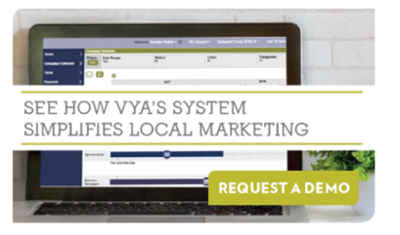A recent study sponsored by the Columbia Business School and the New York American Marketing Association reports that 70% of marketers surveyed* say that marketing efforts are under greater  scrutiny than ever before, and many marketers still don’t have a consistent understanding of what marketing ROI is: When asked to define what “marketing ROI” meant for their own organization, 37% of respondents did not mention financial effects.
scrutiny than ever before, and many marketers still don’t have a consistent understanding of what marketing ROI is: When asked to define what “marketing ROI” meant for their own organization, 37% of respondents did not mention financial effects.
Branding costs can be notoriously challenging to measure and link to financial returns, and the proliferation of new marketing technologies and social media makes it more challenging than ever before to measure marketing ROI. However, there is agreement among marketers that it is important to measure marketing ROI. According to the study, effective measurement of marketing ROI extends beyond traditional metrics such as brand awareness and purchase intent, encompassing financial returns through both cost cutting measures and eliminating redundant costs and process inefficiencies. Below we review some common metrics used in measuring Marketing ROI and then review how marketing resource management systems (MRM) can help.
Trends in Measuring Marketing ROI
Simply put, Marketing needs to improve its ability to measure marketing effectiveness. According to the study, organizations satisfied with measuring marketing ROI tend to use more metrics in general than organizations that are less satisfied. Second, the leadership teams at organizations who are satisfied with their measurement of marketing ROI leverage audience and channel engagement metrics (see below chart). Additionally, the study reports that satisfaction with ROI measurement most closely correlates with leveraging marketing metrics accepted by finance.
Satisfaction with Organization’s Ability to Measure Marketing ROI versus Metric in Use, as reported in the 2012 BRITE-NYAMA Marketing in Transition Study
| Metric in Use | Satisfied | Dissatisfied |
| Channel engagement metrics | 75% | 18.8% |
| Audience metrics | 60% | 20% |
| Financial metrics | 58.6% | 21.2% |
| Set of measurable objectives for all campaigns | 56.1% | 21.1% |
| Universal engagement metrics | 54.3% | 14.3% |
| No metrics | 11.8% | 58.8% |
How MRM Systems Help
Marketing resource management systems can help to address cost inefficiencies in the marketing process, which can be linked to common metrics for measuring marketing ROI. Here’s how:
1. Make processes more efficient – MRM systems enable automated, web-based personalization of marketing messaging and sales resources. Whereas in the past, Marketing departments may have had to individually customize messaging and coordinate the end-to-end fulfillment process on an ad hoc basis, customizations, approvals and fulfillment can instead be streamlined through the MRM system. When partnered with a full service marketing service provider, these process automation solutions powered by MRM systems can translate to significant cost savings in staff time and process efficiencies.
2. Track channel budgets and spending – From all of the metrics tracked in the study, 75% of marketers satisfied with their ability to measure marketing ROI leverage channel engagement metrics (see above chart). MRM systems can help to measure channel engagement by making it easy to assign and manage co-op marketing budgets for distributed sales channels.
3. Track marketing materials costs – MRM systems enable Marketing to track and manage marketing materials for each sales representative to help reduce printing costs, better manage collateral inventories and reduce waste. Additionally, QR codes can be dynamically pointed to the sales representative’s most current contact information to extend the life of printed materials – even when there is sales turnover.
4. Track campaign effectiveness – Marketing campaigns can be created and tracked directly from within MRM systems, providing metrics such as email click through rates, campaign dispositions, and the ability to measure distributed sales channels’ use of the marketing resources and campaigns available to them through the MRM system, especially when unique QR codes are included on print pieces linked to each distributed sales channel, representative, distributor, agent or partner.
Conclusion
While improving marketing ROI has reached the agenda of Marketing leadership, many organizations are still in the early stages of understanding best practices for measuring marketing ROI as the digital landscape evolves. Organizations with more experience measuring marketing ROI use more metrics across the board to measure marketing ROI and exhibit better overall satisfaction with measuring ROI than organizations with less developed marketing measurement programs. For organizations seeking to establish better measurement, the study shows that competency and confidence in measuring marketing ROI improves greatly with practice and time: The study showed 63.8% satisfaction with measuring marketing ROI among organizations who have been measuring marketing ROI for more than five years.
What metrics are you using to measure Marketing ROI?
For more insights on how to improve marketing effectiveness from an ROI perspective, stay turned for future blogs discussing Marketing Process Automation and Maximizing Sales Resource Utilization.
*253 corporate marketing decision makers, director-level and above, were surveyed online between January 27 and February 8, 2012. These professionals are employed at large companies (90% have a global annual revenue of over $50 million; 45% are over $1 billion).


